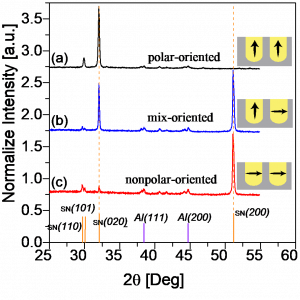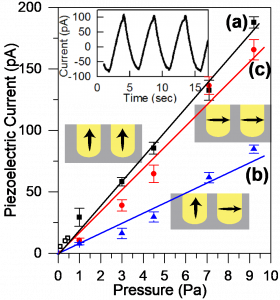Current Research Topics
Currently, the research activities of our group are focused on dielectric nano-crystals and thin films. We study the dielectric behavior of nano-crystals as a function of their microstructure, composition and size. In our lab we grow nanometer-size dielectric crystals inside a highly-dense array of alumina nano-pores. The crystals are grown from over-saturated liquid solutions with preferred crystallographic orientations under a tight control of temperature and composition. The crystals nucleate at the bottom of the pores and grow along the longitudinal axis of the pores. The surface morphology and microstructure of the crystals are characterized using HRSEM. The crystallographic phase and orientation of the crystals are determined using XRD analysis. The composition and nature of chemical bonds are identified by AES, SIMS and FTIR. The dielectric properties are measured using LCR impedance analyzer and Radient instruments. The pyroelectric response is measured in a specially designed set-up where the temperature of the crystals is time- modulated and the pyroelectric current response is measured. The piezoelectric response of the crystals is measured by exposing the crystals to time-modulated mechanical force and measuring the piezoelectric current response.
Current project: Development of highly sensitive piezoelectric detectors for ultra-low mechanical forces
A development of highly-sensitive detectors of low applied mechanical pressures in the scale of few Pascal and below in atmosphere environmental pressure conditions are of a high technological demand for a variety of applications such as a remote control of infants breathing and a leakage alert of hazardous gases. We grow dielectric nano-crystals and study their piezoelectric sensitivity to ultra-low mechanical pressures. The crystals are grown inside alumina nano-pores with preferred crystallographic orientations. A low mechanical pressure (as low as 0.1Pa in a 1 atm. environment) is applied on the crystals in a time-modulated manner. The piezoelectric current response is measured and correlated with the microstructure, composition and crystallographic orientation of the crystals. An example of our study results, done by Dr. Hanna Beshara, a Ph.D. student graduated in 2018, is presented below.
Figure 1:
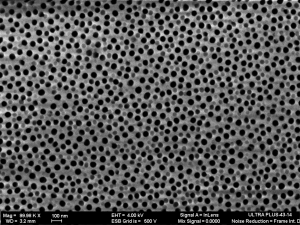
A top view HRSEM image of the porous layer. |
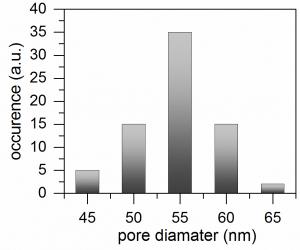 The diameter distribution of the pores with an average diameter of about 55nm. The diameter distribution of the pores with an average diameter of about 55nm. |
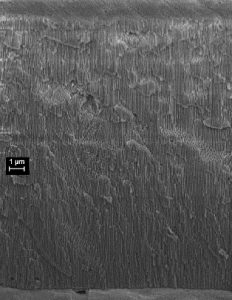 |
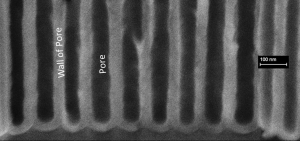 |
